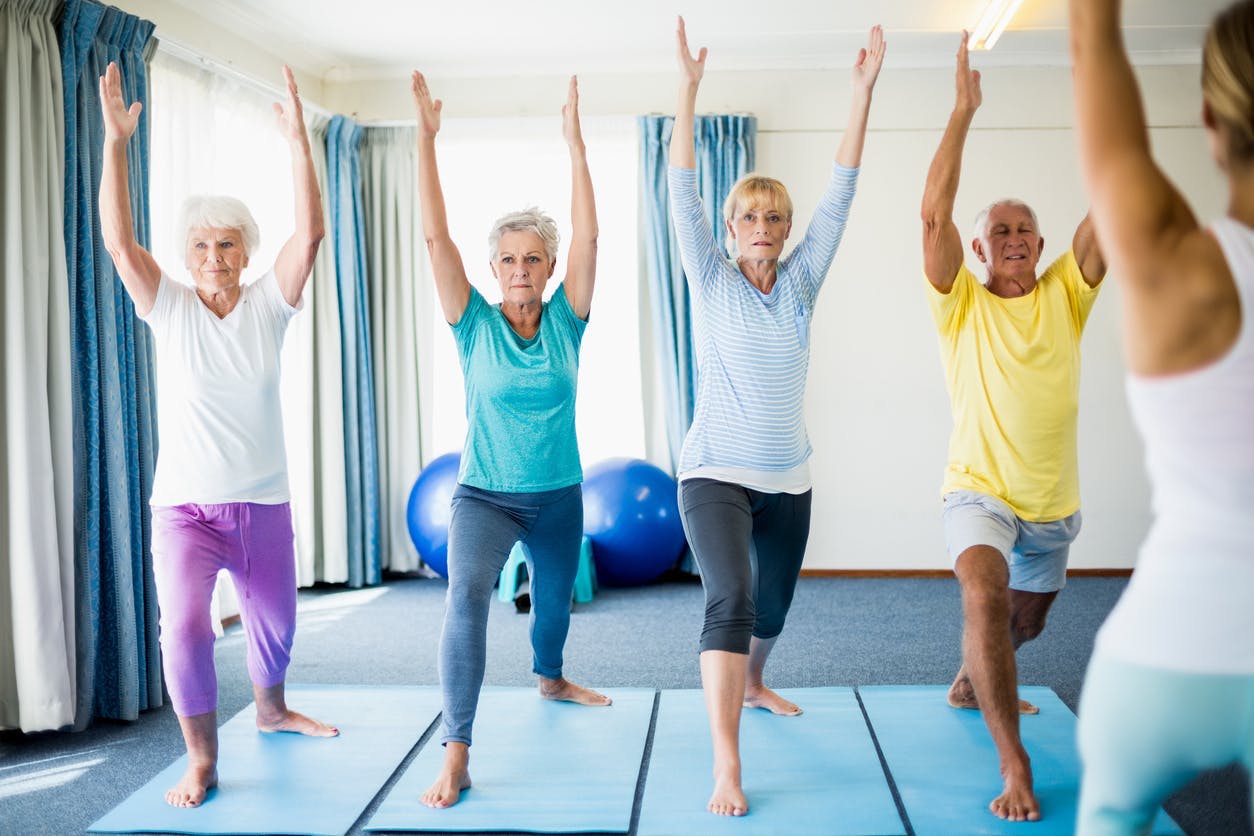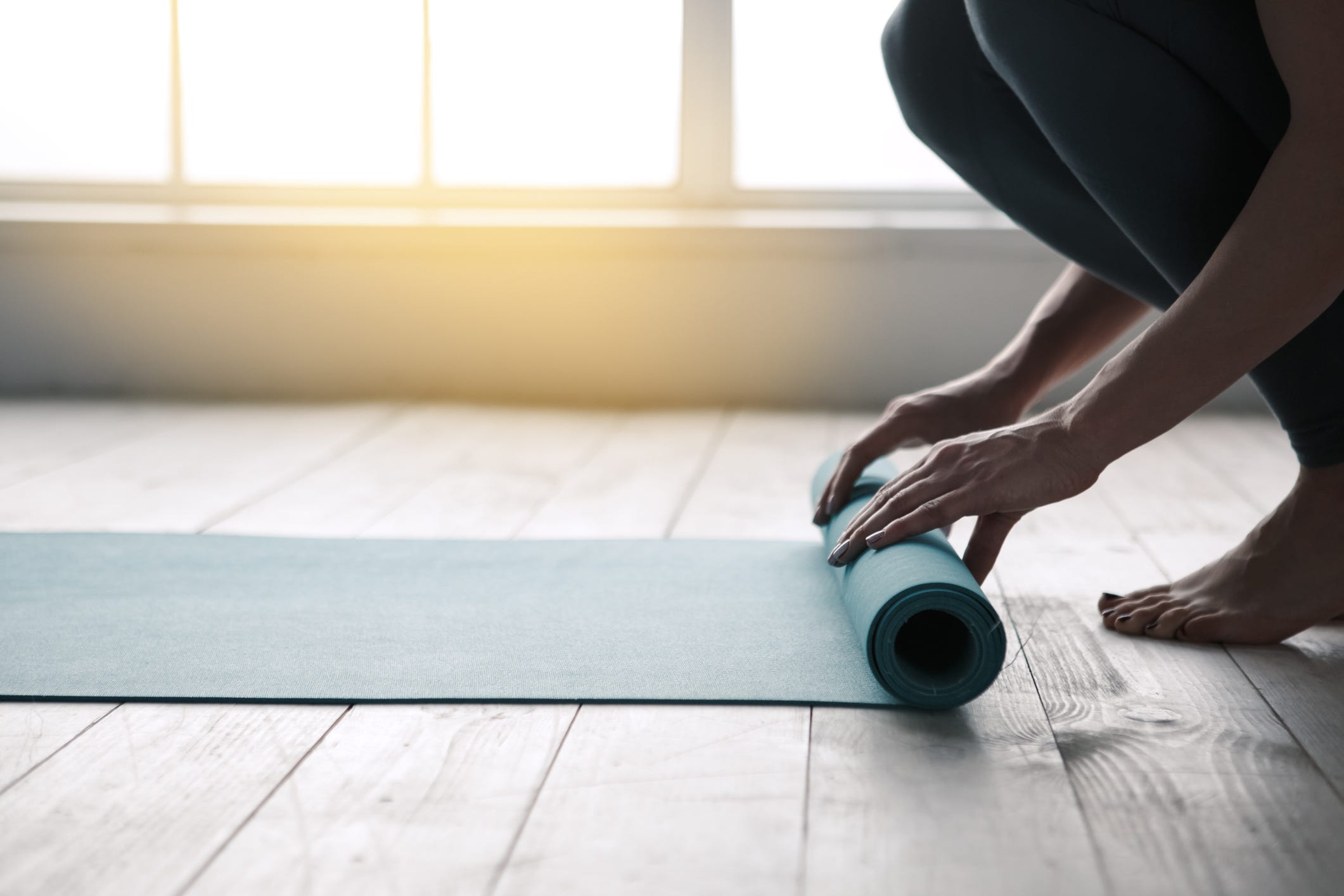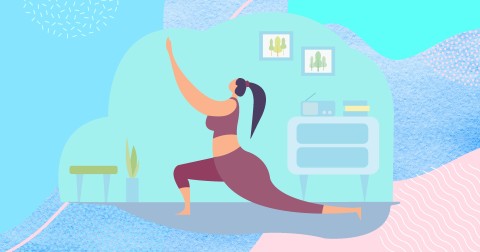
Menstruation yoga emphasizes postures that relieve pelvic pain. Standing straight up, your feet should be at the hips. Your hands should be behind your back. The torso should be straight and the front of the pelvic basin should be in front. The neck should be slightly rolled backwards. If your neck is strained, you can do the pose by pressing your palms together. You can also interlock your fingers without touching them.
Balasana has many benefits for pain relief and discomfort. This pose is particularly helpful for women who suffer from backache during menstruation. It helps to relax the body. It should be avoided by pregnant women and people suffering from knee problems or diarrhea. Turn your top thighs inwards. Once you've performed the asana, rest your back and relax. Keep the asana in place for at least 30 second.

Apana, which is an inversion, can be a common pose for yoga during menstruation. This movement encourages blood circulation from the vagina to reach the Fallopian tube. Inversions reduce retrograde blood flow. Retrograde menstruation can lead to severe endometriosis. A woman who practices this posture regularly may have fewer symptoms than a woman who does not practice it.
Ardha Chandrasana (or Ardha Chandrasana) is another yoga position that relieves menstrual cramps. This posture helps to stretch the abdominal region and decreases cramps. You can do it standing straight or with your legs bent forward. This pose may be uncomfortable, but it is safe for your period. This yoga move can help with stress, anxiety, depression and mild mood swings. These benefits are substantial.
Particularly harmful to women's health are the inversions used in menstruation-yoga. If you practice them at this time, you could be at risk for developing endometriosis. It is a condition that causes endometrial tissue to grow on your body. Inversions can also cause vascular congestion on days with higher flow. These side effects can be avoided by women who invert during periods. This is good for the overall health of a woman and her groin.

For women with menstrual cramps, yoga poses can relieve this discomfort. This pose is also good for back pain sufferers. It is not recommended for pregnant women. However, it can be very beneficial for them. The most used menstruation position is the reclining bend. It is comfortable for pregnant and nursing women, and it stimulates digestive organs with blood flow. It can increase the quality and quantity of life for menstruating women.
Dandasana is the best menstruation yoga posture. It requires a woman to sit on her heels with her left foot against the thigh. To tighten her pelvic area, she bends her torso and then sits on her heels. Next, her head will touch the left knee. She can also hold onto her toes with her hands by bending at her elbows.
FAQ
Why is Metabolic Wellness the Key to Aging Well
People are living longer today than ever. They are also becoming more sick as a result. And while we've made great strides in medical science, it's becoming increasingly clear that our current approach isn't working.
We must change the way that we look at health and aging. For healthy aging, it is important to look at metabolic well-being - not just weight reduction but overall wellbeing.
And if you want to live an active life for decades to come, you should ensure that your metabolism stays strong and healthy throughout your entire lifetime.
There are many methods to improve your metabolic state. One way is to include these 7 foods in your diet.
-
Resveratrol has been found to be a key ingredient in blueberries, and it has been shown that it can help increase cell longevity. They are rich in antioxidants as well as vitamins C & E.
-
Pinto beans and lentils make excellent sources of fiber as well as plant-based protein. These nutrients keep blood sugar levels stable so that they don't spike or crash.
-
Broccoli's sulforaphane has been shown to protect DNA from damage in research. It might even slow down the progression of cancer.
-
Chia seeds are rich in fiber and omega-3 fatty acid. They are rich in protein and antioxidants. These nutrients promote gut health, brain function and heart health.
-
Green Tea contains polyphenols called catechins. Studies show that catechins in green Tea can reduce the risk of developing diabetes, stroke, cognitive decline, and bone fractures.
-
Salmonis a great source of lean protein. It is low in saturated fat and high in vitamin D.
-
Walnuts are rich sources of omega-3s and antioxidants, such as alpha lipoic (ALA). ALA helps boost energy production and protects against inflammation.
How do I build muscle quickly?
The best way to quickly build muscle is to eat healthy and exercise regularly.
It is best to exercise in the morning, when you feel fresh and ready to go!
Exercises such as push-ups and bench presses are good options.
Use different weight training techniques and drink plenty water throughout the day.
Can I go to the gym 7 days a week?
You can go to your gym seven days a semaine, but not simultaneously. It is important to find a time and place where you can exercise without feeling tired or exhausted.
This will help to keep you focused and give you energy for other things.
It is important to eat right during these times. This will ensure you don’t feel tired and sluggish going to the gym.
You must ensure that you don't have any other competing demands on your time. If you have children, it is a good idea to avoid going to school on the evenings as they can distract from your workout.
How many calories per day should I consume?
This can vary from person to person. On average, 2000 to 2500 calories are consumed per day. The factors that determine how many calories are needed for you include your gender, age, height, activity level, lifestyle, and gender.
Is cardio exercise good for your health or bad?
Cardiovascular exercise has many advantages. Cardiovascular exercise improves blood circulation and strengthens your heart muscle. It also increases stamina and helps you lose weight.
Cardiovascular exercise includes running, biking, hiking, swimming, tennis, basketball, soccer, volleyball, football, etc.
Cardio exercises should not be done at high intensity. This could lead to injury.
You should only perform the cardiovascular exercise if you are feeling well.
Don't push yourself beyond what you can handle. If you do, you might injure your self.
Cardiovascular exercise is best done warm-up first. Next, increase your intensity gradually.
Be aware of your body and listen to it. You should stop immediately if you feel any pain while doing cardiovascular exercise.
After a cardiovascular training session, it is recommended that you take some time to relax. This allows your muscles to recuperate.
Cardiovascular exercise is a great way to lose weight.
This is the best way to lose weight and belly fat.
Do I have the obligation to exercise every day or just on occasion?
No! No! It means you need to exercise hard enough or walk fast enough that you are slightly out-of- breath.
Statistics
- According to the American Academy of Dermatology (AAD), men over 50 are at a heightened risk of developing it. (healthline.com)
- Candidates and applicants must pass all four tests at 70% (minimum level) to graduate from Basic Deputy U.S. Marshal (BDUSM) Training. (usmarshals.gov)
- An estimated calorie range for moderately active adult males falls between 2,200 to 2,800 calories per day, depending on age. (eatright.org)
- The PRS enabled risk stratification for overall prostate cancer and lethal disease with a four-fold difference between men in the highest and lowest quartiles (HR, 4.32; 95% confidence interval [CI], 3.16-5.89). (pubmed.ncbi.nlm.nih.gov)
- According to the American Heart Association, blood pressure should be checked at least once every two years, beginning at age 20. (my.clevelandclinic.org)
External Links
How To
How do I lose weight while working out?
Exercise burns calories by increasing metabolism and oxygen consumption.
At moderate intensity, you will lose weight easily.
These are some tips to help you lose fat while working out:
-
Cardio exercises can include running, walking, swimming or cycling.
-
For 30 minutes, do it three times a week.
-
You can add strength training into your exercise routine if you're looking to lose even more weight.
-
Avoid intense training. You can build muscle and not break down muscle tissue.
-
Drink plenty of water during exercise. Water helps to flush out toxins from the body and maintains proper hydration.
-
Choose low-fat protein shakes after working out. Protein shakes can help boost energy and repair muscles.
-
Eat smaller meals throughout the day, so you don't feel hungry between meals.
-
Don't skip breakfast! Skipping breakfast can cause you to feel tired and sluggish.
-
Take care of your mind. Stressful situations can slow your metabolism.
-
Keep a positive attitude. Studies have shown that people who are convinced they are overweight gain more weight than those who feel they look attractive.
-
Get enough sleep. Lack of sleep makes it harder to burn fat.
-
Be active. Be sure to get up and move around every hour or two.
-
Maintain a healthy diet. Eat right to feel satisfied and full for longer.
-
Find ways to relax. An anxious mind won't allow your body release stress hormones, which can lead to the destruction of muscle tissue.
A balanced diet contains all necessary nutrients for growth and development.
Instead of eating three large meals a day, eat six smaller meals every day. This allows your body to properly digest what you have eaten.
For strong bones to be maintained, you need approximately 500mg of calcium per day. Calcium can be found in dairy products such as yogurt, fortified soybean beverages, orange juice, cereals, bread, and cereals.
Calcium is found in green leafy vegetables, beans, tofu, seeds, nuts, and cheese.
Vitamin D is essential for calcium absorption. Vitamin D can be found in egg yolk, fatty fish, and other fortified foods.
Vitamin E is essential for skin health. Vitamin E can also be found in vegetable oil, wheat germ oils, peanuts as well almonds, sunflower seeds and corn.
Zinc is essential for healthy immunity and wound healing. Zinc is found in seafood, oysters legumes meats, whole grains, whole grains and meats.
Zinc deficiency could cause fatigue, nausea, vomiting, and depression.
Eating too much sugar causes insulin resistance, which increases blood glucose levels. Insulin resistance is linked to weight gain.
Insulin resistance occurs when the bloodstream is full of free radicals. Free radicals refer to molecules that contain unpaired electrons. They can damage cell membranes and other body parts.
The most common sources of free radicals include food additives.
Free radical damage can lead to cancer, heart disease, diabetes, arthritis, asthma, and aging.
Antioxidants are essential for preventing free radical damage. Antioxidants protect against oxidative damage.
Vitamin C, beta carotene (found within citrus fruits, carrots, sweet potatoes and spinach), Vitamin E (found inside nuts, olive oils, avocados and eggs), and Vitamin C (found among mangoes.
Selenium, manganese (and zinc) are other antioxidant nutrients.
Selenium helps protect cells from oxidative damage caused by free radicals. Selenium is found in Brazil nuts, tuna, liver, kidney, shrimp, cod, turkey, beef, lamb, pork, and chicken.
Copper protects your eyes, brain, eyes and red blood cell. Copper is found in shellfish, poultry, meat, and organ meats.
Manganese forms an essential part of bone structure. Manganese may be found in brown rice or spinach, bananas and prunes as well raisins, oatmeal and lentils.
Zinc helps with normal growth, reproduction, as well as wound healing. Zn is found in lean cuts of meat, white fish, poultry, and eggs.